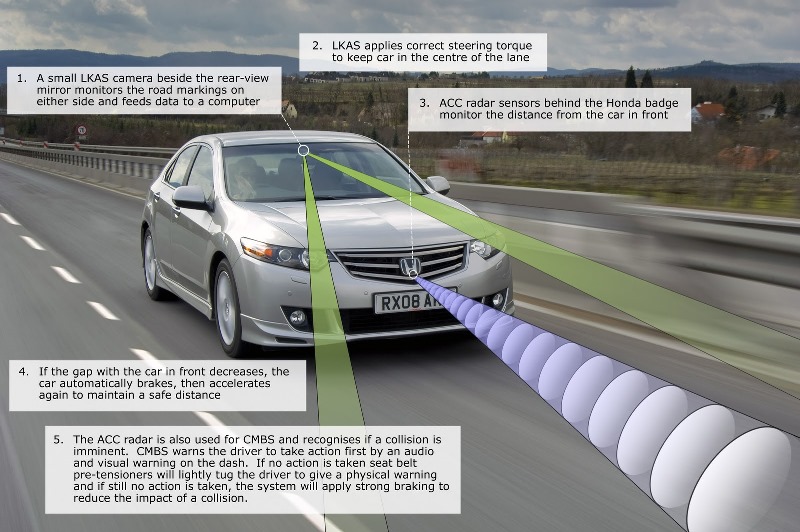
The most common use for image sensors today is in smartphones and cameras, but there are other applications for imagers that may present just as large a market, and make the world safer to boot. One in particular is the Autonomous Emergency Braking (AEB) system, a vehicle safety technology designed to prevent or reduce the impact speed of a crash. The system is designed to alert drivers to imminent crashes and assist them in using the vehicles’ maximum braking capability, or even apply a vehicle’s brakes without driver involvement if a crash is imminent.
The United Nations Economic Commission for Europe (UNECE) made AEB mandatory for new trucks and motor coaches starting in 2013. According to a study done by the European Commission, if all vehicles were fitted with this technology it could reduce traffic accidents by 27% annually, resulting in 8,000 fewer deaths and a cost savings of $6.05 billion and $9.7 billion. Starting this year, the European crash-test organization, Euro NCAP, began using availability of AEB as part of its car safety ratings. Honda has already made AEB standard in some of its vehicles, as have Audi, BMW, Lexus, Mercedes-Benz, and others.

Honda's Autonomous Braking System is standard in its Accord. A lane-keeping assist (LKAS) camera works with an autonomous cruise control (ACC) radar and the collision-mitigation brake system (CMBS) to provide safe braking.
While they are reliable, the AEB systems seen so far are in their infancy, and will continue to improve. They can use optical imagers, radar, and/or lasers to detect potential collisions not only with other vehicles, but in some cases with pedestrians or road hazards too. Some of the advantages that optical imagers can provide are their established technology roadmap and their proven track record in image recognition. Further, they can be used to implement additional functions as well, further reducing total system costs.
A recent example of an optical sensor designed for AEB applications is the MLX75421 Blackbird from Melexis. This 3rd generation automotive imager is a high dynamic range (HDR) sensor that features many on-chip functional safety (ASIL) support functions. It not only supports AEB, but also electronic mirrors/camera monitor systems (CMS) and autonomous evasive steering. The device is also highly optimized for next-generation viewing applications like surround/rear view systems with object detection functions.
According to Melexis Product Marketing Manager Cliff De Locht, “Cost-effective support for ASIL systems was a key design specification from the start. For Blackbird’s functional safety design, we drew [on] the company’s internally available functional safety expertise as Melexis already manufactures other ASIL ready sensors. This resulted in an impressively smart functional safety design and gives us a head start in targeting safety systems like AEB ….”
Advertisement
Learn more about Melexis Microelectronic Systems





